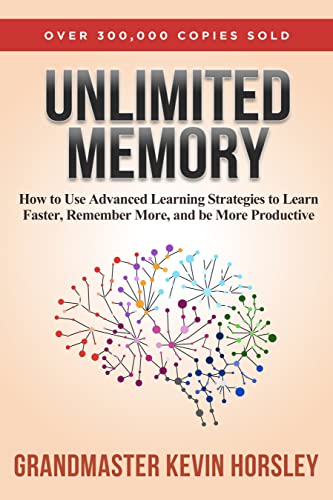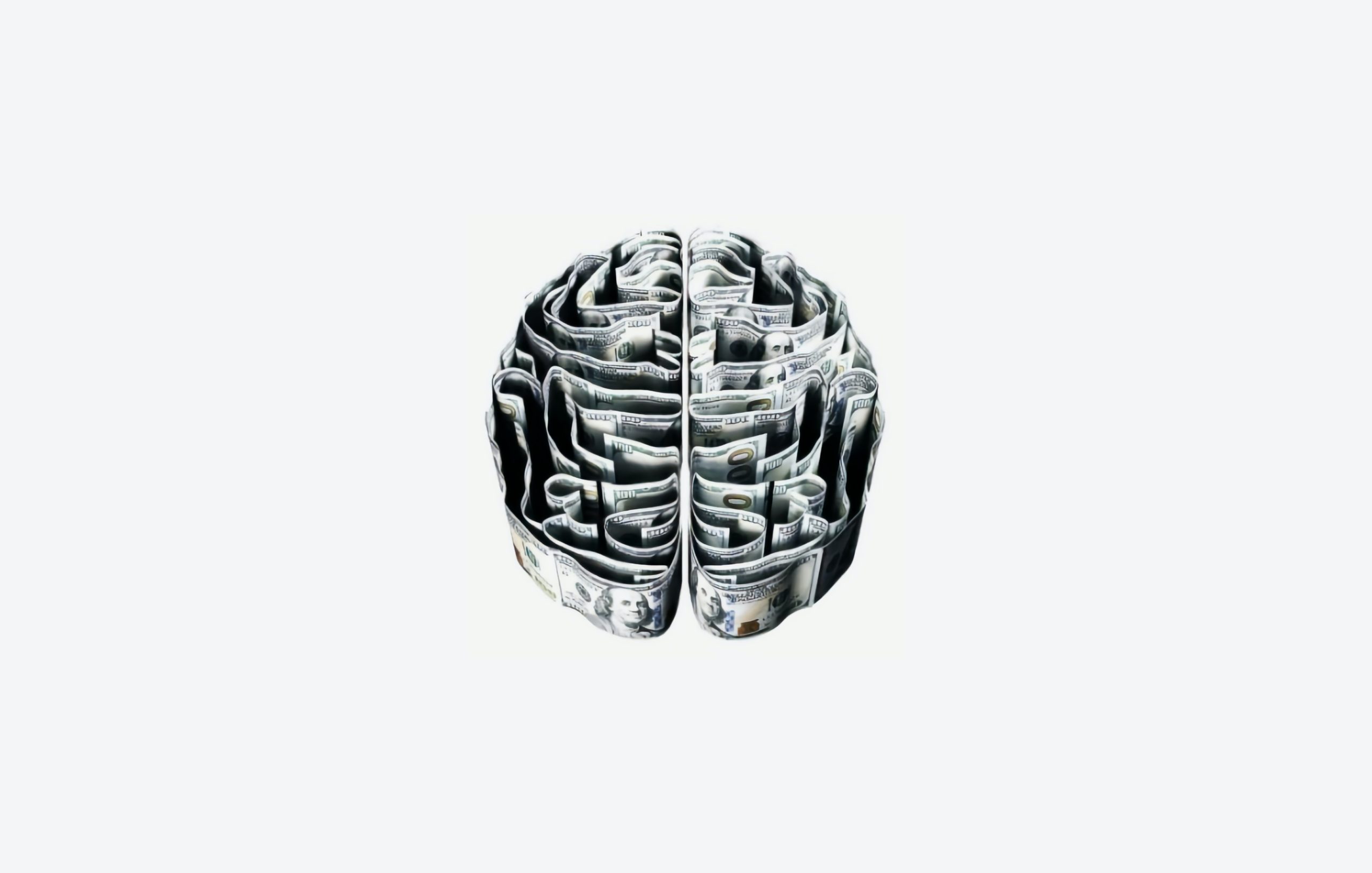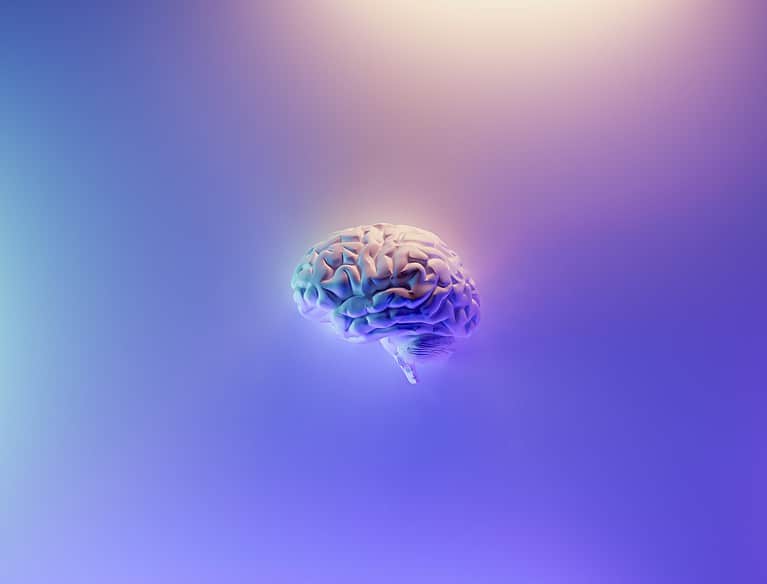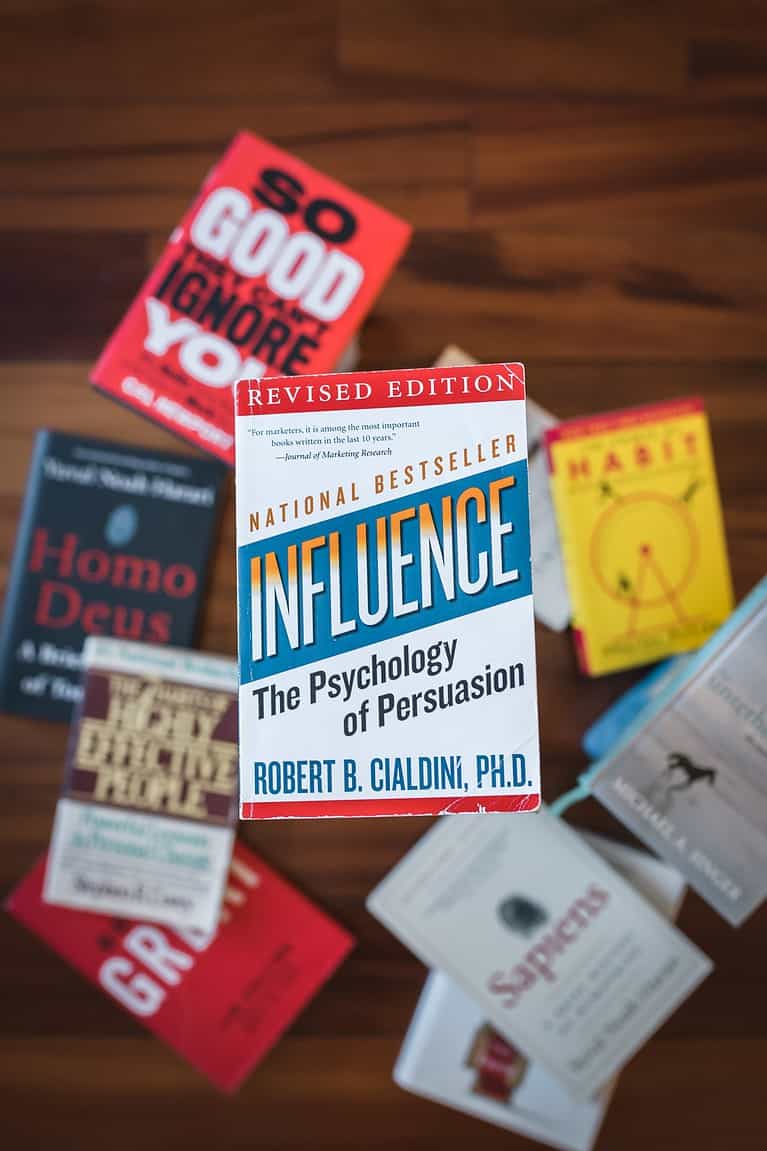Unlimited Memory by Kevin Horsley | Book Summary
In his book, Unlimited Memory: How to Use Advanced Learning Strategies to Learn Faster, Remember More, and be More Productive, Kevin Horsley shows you how the world’s best memory masters get themselves to concentrate at will, anytime they want.
When you can easily focus and concentrate on the task at hand and store and recall useful information, you can easily double your productivity and eliminate wasted time, stress, and mistakes at work.
Buy Unlimited Memory on Amazon

Unlimited Memory by Kevin Horsley
How to Use Advanced Learning Strategies to Learn Faster, Remember More, and be More Productive
Those seemingly having photographic memories are using the methods in this book to some degree. You can use these tools, strategies, and techniques to tap into your natural abilities and improve your memory.
Download the PDF Book Summary for Unlimited Memory
Chapter 1 — Introduction
“What would your life be like if you could learn and remember information easily, quickly, and effectively? Think about it.”
This book gives you a set of powerful methods and skills to help you learn more and achieve unlimited memory. You need to intentionally work your mind with the foundation being training your memory.
“Memory is the cornerstone of our existence. It determines the quality of our decisions and, therefore, our entire life!” And learning and memory are two crucial abilities in our mind:
- Learning – the ability to acquire new information
- Memory – the ability to hold new information in place over time
Improving your memory helps to improve your entire life. You can learn more, create connections, and access information. Thus, when confronted with these two choices for your memory, you should opt for the second:
- “Your memory cannot be improved; you can do nothing to make any difference to your in-born ability.”
- “Our memory is just a habit, and habits can be improved with the right kind of training and practice.”
Part 1 — Concentrate
The first section of Unlimited Memory discusses improving your concentration by eliminating your excuses, changing your beliefs, and being present.
Chapter 2 — Excuse me
When you make up excuses for learning something new, you will be unable to focus on the material in the book. Here are three common excuses for giving away your attention:
- I am Helpless as I am not capable, willing, or have the time.
- Someone Else is to Blame as it is not my fault, and I need support.
- There’s Too Much Stress from the overwhelming material, difficultly, or effort required.
Get rid of your excuses! Take responsibility and rise above the mediocrity. You should want to improve your unlimited memory to help you learn new information and skills faster.
Take Action Now:
- If you keep making excuses, where will you be in 12 weeks or five years from now?
- Who would you be without your excuses?
- Remember, excuses are not the truth, so change them now.
- Would you rather experience your potential or excuse yourself from it?
- Why should you learn to empower your memory?
Chapter 3 — Never believe a lie
Your beliefs of your perception of your concentration and memory may be only part of the truth. If you want to improve them, you need to establish a supporting belief system:
“A belief is a sense of being certain, and what you believe, you become.”
When you change the beliefs in your mind, you will change your perception of yourself, your potential, and your life outcomes. You can change your beliefs as follows:
- From the 80/20 Rule, 80% of changing a belief is about why you want to change it, and 20% is how you want to do it.
- Question the belief as to why you believe what you believe.
- Establish a new belief using confirming experiences, research, and thoughts.
- Use your new belief frequently to make it become part of your identity.
As you can change your beliefs, here are five core beliefs to consider:
- You were born with exceptional concentration and unlimited memory.
- You want to improve your memory as it is an important life function.
- You have incredible abilities as your memory is unlimited.
- You can overcome failure and change your approach using feedback.
- You don’t know it all, so embrace change and new perspectives.
Take Action Now:
- Identify and question your self-limiting beliefs.
- Are you unable or now willing to improve your concentration and memory?
- What other beliefs do you have about your mind and your potential?
Chapter 4 — Be here now
You are in control of your attention, and you can direct it to take action in your life. However, many get mentally occupied by conflict, which is the opposite of concentration. Instead, you can be more peaceful and present by focusing on these four areas:
- Take Control of Your Inner Voice by catching yourself doing more things right.
- Stop Multitasking as it is a myth, and instead, you are switching between tasks.
- Know What You Want by having a clear purpose for learning this information.
- Eliminate Worry by planning for various mental scenarios and practicing peace.
“Learn to practice peace because if you have no attention, you have no retention.”
Download the PDF Book Summary for Unlimited Memory
Part 2 — Create and connect
The second section of Unlimited Memory discusses improving your ability to Create imagery and Connecting concepts together. Each method presents systems to show you how to transform information into meaningful concepts and store it well to be easy to use.
Chapter 5 — SEE Principle: Bring information to life
Attaining unlimited memory is a creative process, and you can improve it by seeing information as images in your mind. The neuroscientist John Medina has said, “Hear a piece of information and three days later you’ll remember 10% of it. Add a picture, and you’ll remember 65%.”
You can use the ‘SEE’ principle to create images and movies in your mind that are exciting and unforgettable:
- Senses (S): When you use many of your five senses (sight, sound, smell, touch, and taste), you experience and remember more.
- Exaggeration (E): You can make your images fun and memorable by exaggerating using positivity, emotion, and humor.
- Energize (E): Give your images motion by making them vivid, colorful, and energetic instead of dull, rigid, and flat.
The SEE process should be fun and enjoyable as the key to unlimited memory is to use your imagination to bring the information to life.
Chapter 6 — The Car Method: Use your car to remember
The Car Method is a technique using your car to store and organize information, as it is easy to remember and navigate in your mind. Your vehicle is already in your long-term memory (LTM) and provides unused space to store short-term memories (STM). When you have committed the STM into memory, you create a medium-term memory (MTM) shown in this formula:
Long-Term Memory (LTM) + Short-Term Memory (STM) = Medium-Term Memory (MTM)
Further, you can use these techniques to organize information to make retrieval easier. Thus, the key to unlimited memory is superior organization.
Keven Horsley illustrates the Car Method to learn Stephen Covey’s Seven Habits of Highly Effective People. You can mentally SEE the images of the Seven Habits on your car as follows:
- Habit 1 – Be Proactive: Imagine a bee being a professional golfer.
- Habit 2 – Begin with the End in Mind: Envision a brain in a race and see the end in mind.
- Habit 3 – Put First Things First: See a man on the first place spot on a podium, putting first things first.
- Habit 4 – Think Win/Win: Think about two trophies for a win/win scenario.
- Habit 5 – Seek First to Understand, Then to be Understood: Envision a man under an umbrella that will stand up.
- Habit 6 – Synergize: Imagine a sign balancing on the edge with eyes (synergize).
- Habit 7 – Sharpen the Saw: See a sharp saw on the tire.
Less is more, as you should try to use fewer images that are simple and clear to remember as much as possible.
Chapter 7 — The Body Method: Use your body to remember
The Body Method uses your body parts to store information as you use it every day and know it well. In Tony Buzan’s book, Head First, he discusses humans having at least ten intelligences, so Kevin Horsley uses this method to store them in ten places:
- Feet – Creative Intelligence: Imagine standing (feet) on a light bulb (creativity).
- Knees – Personal Intelligence: Envision a purse (personal) on your knees.
- Thighs – Social Intelligence: See a party (social) happening on your thighs.
- Hips – Spiritual Intelligence: Imagine a beautiful angel (spirituality) on your hips.
- Stomach – Physical Intelligence: See yourself working out (physical) to sculpt the stomach area into a six-pack.
- Left Hand – Sensual Intelligence: Use your left hand for the sense of touch.
- Right Hand – Sexual Intelligence: Create your own image using your right hand.
- Mouth – Numerical Intelligence: See yourself only speaking (mouth) in numbers.
- Nose – Spatial Intelligence: Imagine a spaceship (special) flying up your nose.
- Hair – Verbal Intelligence: Envision your hair follicles talking (verbal) to each other.
The Body Method helps you jump between various pieces of information and can allow you to store it in many more places than just ten.
Chapter 8 — The Peg Method: Pegging information down
The Peg Method unlocks the potential of unlimited memory using association. The individual pegs act like clothes pegs as places to hang information in your mind.
The Rhyming Peg Method creates memory pegs using rhyming words to link images in your mind. Kevin Horsley demonstrates using rhyming words to learn the ten emotions from Tony Robbin’s book, Awaken the Giant Within:
- One (Bun) – Love and Warmth: Visualize a warm bun shaped like a heart.
- Two (Shoe) – Appreciation and Gratitude: Envision a preacher (appreciation) grating (gratitude) a shoe using a cheese grater.
- Three (Three) – Curiosity: As curiosity killed the cat, imagine a cat trapped in a tree.
- Four (Door) – Excitement and Passion: See someone excited to break down doors.
- Five (Hive) – Determination: See someone determined to get rid of a beehive.
- Six (Sticks) – Flexibility: Visualize a really bendy (flexible) stick.
- Seven (Heaven) – Confidence: Imagine a confident group of people in heaven.
- Eight (Gate) – Cheerfulness: Visualize yourself cheerfully walking through a gate.
- Nine (Vine) – Vitality: Envision vitamin grapes growing on a vine.
- Ten (Hen) – Contribution: See yourself getting eggs (contributions) from a hen.
The second method is The Shape Peg Method to transform numbers into shapes. It is similar to the Rhyming Peg Method. However, the pegs are shaped like the numbers they represent.
Download The PDF Book Summary For Unlimited Memory
Chapter 9 — The Journey Method: In the first place
The Journey Method is the original and most effective method as it is not overwhelming. You use “places or makers on a location, journey, or route to store information” as follows:
- Mentally prepare a familiar location such as a house, trip, city neighborhood, etc.
- Establish markers or places throughout this location in a logical order.
- Clearly SEE the information that you want to remember.
- Place each thing at one of the marked locations to remember it.
Kevin Horsley demonstrates the Journey Method to remember information from John C. Maxwell’s book, Today Matters. He creases a mental map of four rooms with twelve places to learn the Daily Dozen or the twelve keys to success and fulfillment:
- Room 1 – Kitchen
- Item 1 – Washing Machine – Attitude: Imagine someone with a lousy attitude getting trapped in your washing machine.
- Item 2 – Fridge – Priorities: Visualize having a priority list on your fridge door.
- Item 3 – Stove – Health: Envision cooking healthy food on the stove.
- Room 2 – TV Room
- Item 4 – Chairs – Family: Imagine your family jumping around on the chairs.
- Item 5 – TV – Thinking: Envision a thought bubble coming from the TV.
- Item 6 – Exercise Bike – Commitment: Visualize being committed to working out on the exercise bike.
- Room 3 – Bedroom
- Item 7 – Mirror – Finances: See money (finance) churning out of the mirror.
- Item 8 – Cupboards – Faith: Place your idea of faith on the cupboard shelf.
- Item 9 – Bed – Relationships: Create your own image in the bed.
- Room 4 – Bathroom
- Item 10 – Bathtub – Generosity: Picture a genie flowing out of the bathtub generously granting your wishes.
- Item 11 – Shower – Values: Imagine valuable gold flowing out of the shower.
- Item 12 – Toilet – Growth: Envision a tree growing out of the toilet.
After creating a mental map, you can review it a few times and backwards to commit the images to memory. To work toward achieving unlimited memory, you have to practice.
Chapter 10 — Linking thoughts
Your mind learns and works by associating new information with old information. The more you know, the easier it becomes to connect information and to achieve unlimited memory.
Kevin Horsley creates an engaging story to demonstrate how to link thoughts to learn the first twelve Presidents:
- Envision that you are Washing a tin (Washington).
- While washing, the tin develops a big Adam’s apple.
- A chef and her son (Jefferson) rip the Adams apple out.
- They decide to make Medicine (Madison).
- They give it to Marilyn Monroe.
- She also starts to develop a huge Adams apple.
- Michael Jackson sees the Adams apple and runs away screaming.
- He runs into a van with beer in (Van Buren) it.
- The van is driven by a hairy sun (Harrison).
- The sun crashes the van into a tiler (Tyler), tiling his wall.
- The tiles have Polka (Polk) dots on them.
- A Tailor (Taylor) takes the polka dots off to put on a suit.
You can build on this story to learn all the Presidents of the USA. After learning the list, you can connect more information like Vice Presidents using any previous methods. Each word will trigger the next as the link only require memorizing only two things at a time.
Chapter 11 — Remembering Names
Remembering names will provide you with significant networking benefits and save you from embarrassment. There are four Cs to focus on to remember names well:
- Concentrate: Listen intently and get genuinely interested in their name.
- Create: Creatively come up with an image from the name.
- Connect: Create a relationship between their name and a known face.
- Comparison: Link their name to someone you know with the same name.
- Face: Link their name to a unique feature on their face.
- Location: Link their name to the place where you meet them.
- Continuous Use – Use their name in the immediate conversation to make it stick.
When you meet someone, review their name and save their information to your contact list or add them on social media to help you remember. When you focus on remembering others, they will try to remember you.
Chapter 12 — The Number Code System: Remembering Numbers
Numbers are significant yet tough to remember. Many choose to store them in notes or devices. However, remembering numbers will help you build confidence, mental strength, and work toward unlimited memory.
The Number Code System involves shaping the numbers into letters and then building words. Here is the framework of the number code:
- 0 – S, Z, or C sound – sounds like the hissing of a wheel (0)
- 1 – T or D sound
- 2 – N sound
- 3 – M sound
- 4 – R sound
- 5 – L sound
- 6 – J, Sh, soft Ch, or soft G sound
- 7 – K or C sound
- 8 – F or V sound
- 9 – B or P sound
- No Value – vowels (a, e, i, o, and u) and other letters (w, h, and y)
At first, you have to work deeply to understand the code, but then it gets much easier. This system can train you to remember a lot of information in a specific order.
Download the PDF Book Summary for Unlimited Memory
Chapter 13 — Art in Memory
The methods help you turn information into a work of art. You can create images using Google images, illustrator software, or hand drawings. And the process brings out creativity, association, and personal connection to the information.
You can create a Memory Diagram, which consists of linked sub-images that represent the information. The book, Unlimited Memory, provides a memory diagram to help remember the first ten elements of the periodic table.
You can also use a Mind Map, which is a multi-sensory way of transferring and structuring your thoughts on paper to see both the big picture and the details. Follow these steps to map something out using a Mind Map:
- Central Image: Draw an image in the center to represent the main topic or idea.
- Main Branches: Draw links to the central image to be the main branches or headings. Use one color for each to help visually differentiate between them.
- Secondary/Tertiary Branches: Connect second-level and third-level branches to provide more detail for each main branch.
- Smaller Branches: Continue linking to existing branches to clarify ideas and provide more detail.
When creating branches, try to stick to using one word per branch. Also, make it colorful, creative, and fun to help you better develop associations.
Chapter 14 — Using the methods
Now that you have learned the basics of the methods, you can adapt them to any situation to remember just about anything using these tips:
- Remembering written information word-for-word: Find the keywords in the text, create imagery to represent them, and use one of the systems presented earlier.
- Presenting from memory: Structure your presentation using the FLOOR principle to be engaging and help your audience remember more:
- F: First things
- L: Last thins
- O: Outstanding information
- O: Own links
- R: Repeated information
- Absent minds: Stop focusing on forgetful moments, “start to catch your memory doing things right, and you will see improvement.”
- Remembering playing cards: Create images to remember each card using the first letter of each suite with the Number Code System.
- Studying anything: Consider the following to improve your studying:
- Prepare: Plan your learning by doing a little bit at a time.
- PIC: Have a strong Purpose, Interest, and Curiosity.
- Pause: Take breaks every 25 to 40 minutes to give your mind a rest.
- Preview: Get an overview and analyze the material you will cover.
These tips will help you adapt the methods in Unlimited Memory to help you learn any information without limitation.
Part 3 — Continuous use
The final section of Unlimited Memory discusses improving and creating a habit with Continuous use.
Chapter 15 — Self-discipline
If you want to master anything or specifically the information in Unlimited Memory, you need to have self-discipline:
Self-discipline – the act of “raising your standards and going for it and being more.”
However, “people simply don’t do it because they think that the future will be a better place than today without doing anything to make it better.” Instead, you can have more self-discipline in your life using these four steps:
- Create a Vision: Imagine the exciting possibilities, focus on the goals you want to accomplish, and establish why you want to do them.
- Make a Decision: Commit to the changes and incorporate them into your routine.
- Stop Listening to Your Feelings: Forget your intuition, and schedule a time during the day to train your memory.
- Take Daily Action: Eat that frog and develop the habit of memory training by taking daily action on it.
“The only way you get good at anything is through self-discipline; remember, life only rewards action!”
Chapter 16 — Review to renew
Studies show that the average student remembers 18% of their material after a month-long break. Thus, training without proper review is a waste of personal resources. When you use the methods and systems in Unlimited Memory, learning becomes fun, effective, and worthwhile. You will be able to store information in your long-term memory to review and recall later.
When reviewing, walkthrough the images so that they are strong and clear in your mind. Immediately, try to recall the information backwards. Later, review at longer and longer intervals: 1 hour, 1 day, 3 days, 7 days, etc. The first 72 hours are critical to transfer and store knowledge. It takes discipline, but it will help you remember and make more connections in your mind.
Download the PDF Book Summary for Unlimited Memory
Conclusion and Next Steps
“Memory skills are an important tool in your self-improvement arsenal.” In Unlimited Memory, Kevin Horsley has given you the tools of the world’s best memory masters and leaders, but now it is up to you to practice them and unleash your unlimited memory.
For more, get your own copy of the book here:







